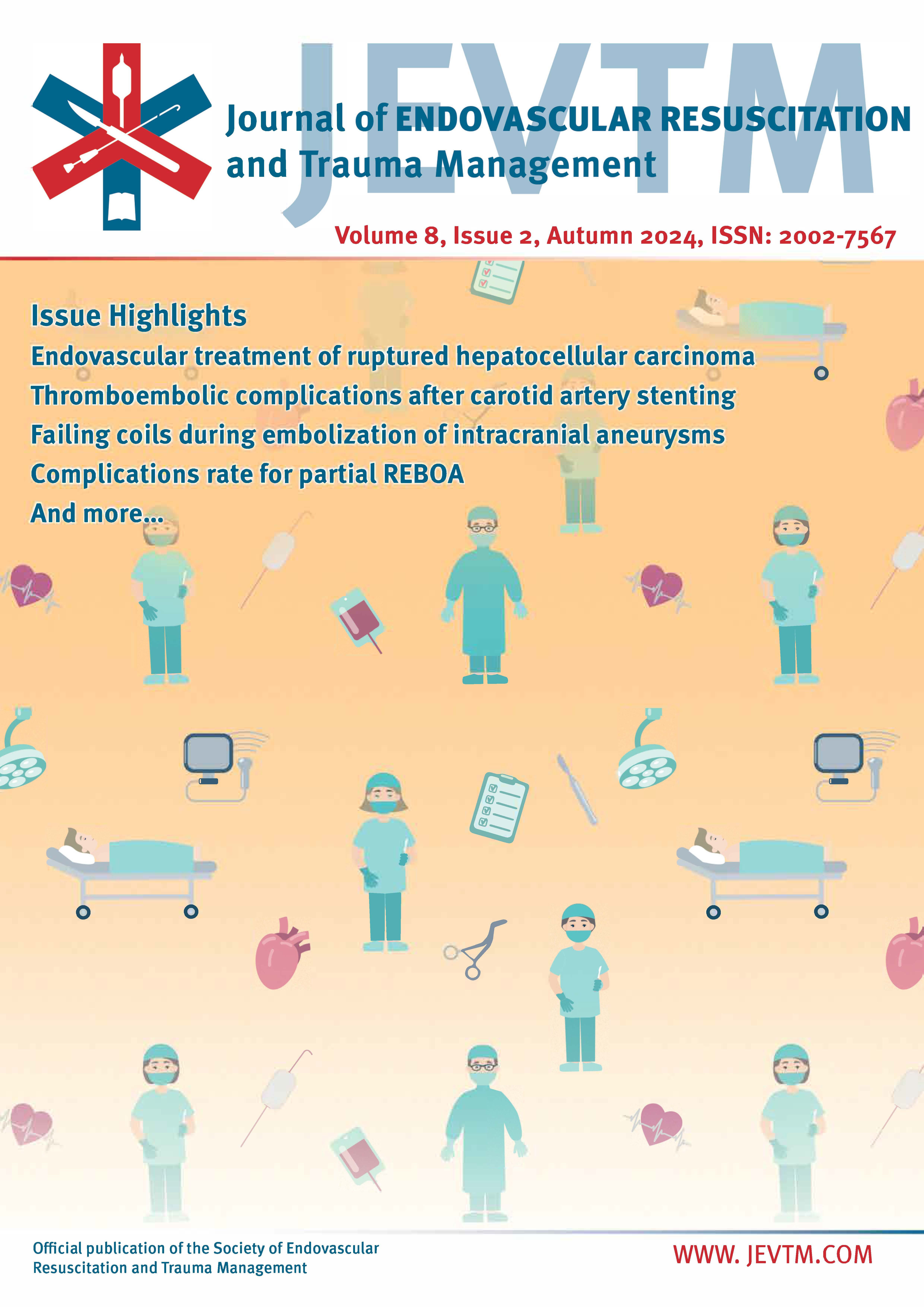Comparison of Thromboembolic Complications After Carotid Artery Stenting with and without Using Protection Devices: A Systematic Review and Meta-Analysis Study
DOI:
https://doi.org/10.26676/jevtm.25894Keywords:
Carotid Angioplasty, Carotid Artery Stenting, Protection Devices, ThromboembolicAbstract
Background: This study compared the rate of thromboembolic events during carotid angioplasty and stenting (CAS) with and without embolic protection devices (EPDs). We reviewed literature to find studies comparing embolic event rates during CAS with and without EPDs and conducted a meta-analysis to determine the safer approach.
Methods: The Embase, PubMed, and Web of Science databases were thoroughly searched following PRISMA guidelines. Each estimation was executed using random-effects models. The I2 index was used to assess the heterogeneity among the studies. Egger and Begg’s tests were applied to evaluate publication bias. Stata version 14.2 was used for statistical analysis.
Results: For 25% of patients, an EPD was used during CAS, and for 75% it was not. Of the patients undergoing CAS, the prevalences of hypertension, diabetes mellitus, coronary artery disease, and cigarette smoking were 81%, 37%, 39% and 43%, respectively. In total, of the patients included 52% were symptomatic and 48% were asymptomatic. The mortality rate reduced from 2% in the no-EPD subgroup to 1% in the EPD subgroup. The occurrence of all other complications was also reportedly higher in patients who did not receive an EPD, including major stroke and myocardial infarction, except for minor events, which were reported to be almost the same in both subgroups.
Conclusions: We found that the use of an EPD can help reduce the occurrence of thromboembolic complications of CAS, including myocardial infarction, major stroke, and death. Altogether, our results suggest that the benefits of using an EPD during CAS outweigh its risks.
Downloads
Published
How to Cite
Issue
Section
License
Copyright (c) 2024 Maryam Sadr, Kimia Vakili, Dorsa Bahrami Zanjanbar, Fatemeh Hasani, Mohammad Samadian, Reza Madadi, Arian Tavasol, Atoosa Keshavarzmotamed, Omidvar Rezaei, Seyed Ali Mousavinejad

This work is licensed under a Creative Commons Attribution 4.0 International License.
Authors of content published in the JEVTM retain the copyright to their works.
Articles in the JEVTM are published under the terms of a Creative Commons CC BY 4.0 license, which permits use, downloading, distribution, linking to and reproduction in any medium, provided the original work is properly cited.




